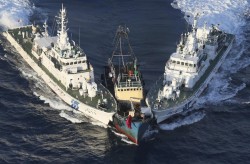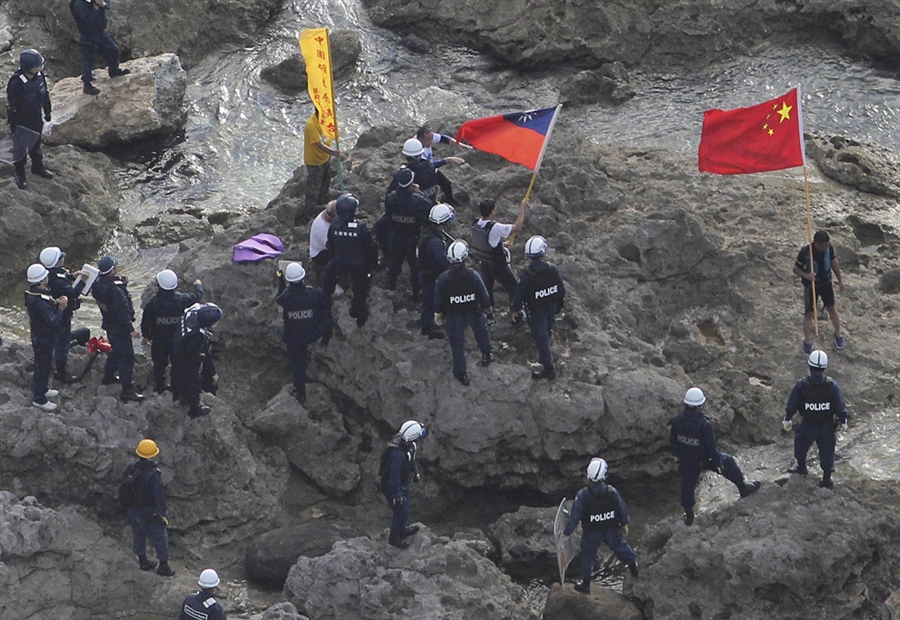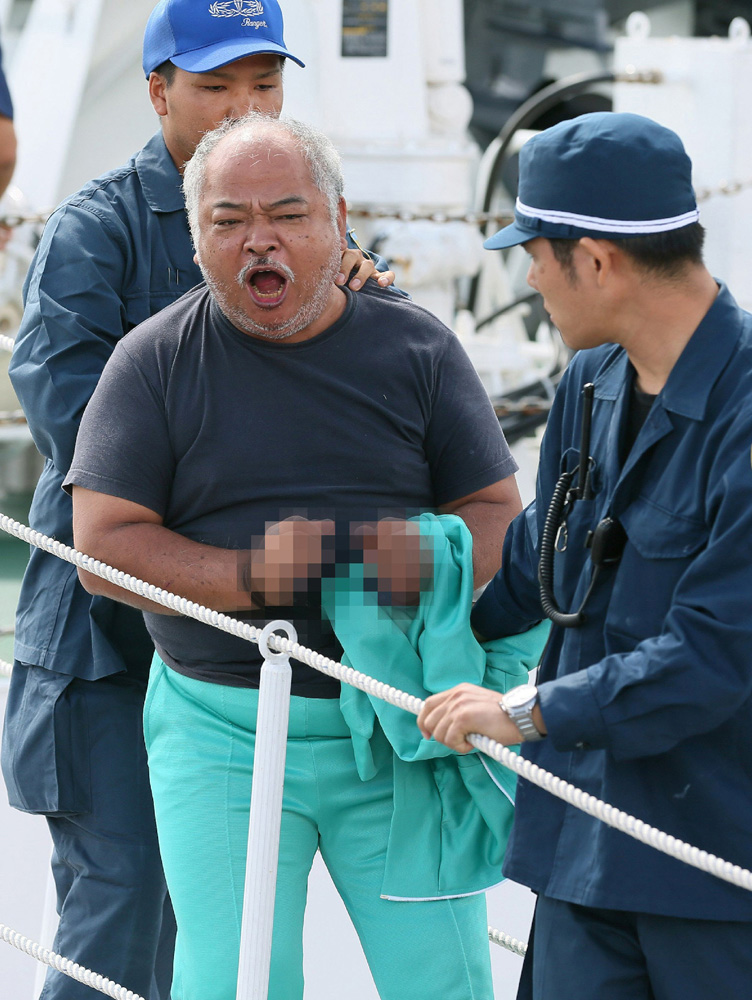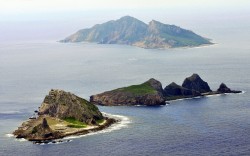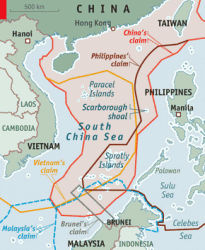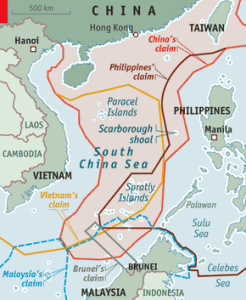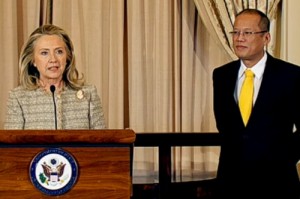
By Jack Moore
The People’s Liberation Army Navy (PLAN) has maintained a counter-piracy presence in the Indian Ocean for four years. This begs the question: why is China becoming increasingly cooperative in counter-piracy operations?
The rise of China is one of the prominent issues of the day for scholars of International Relations of the day and it will continue remain so for the foreseeable future. The PLAN counter-piracy deployment is a fascinating component of the wider China debate, as it represents the first time that Chinese vessels have conducted a ‘far-seas’ operation to protect Chinese interests since the fifteenth century. Even more remarkable is the fact that the typically isolationist and paranoid Chinese Communist Party (CCP) is now openly cooperating with a variety of traditional foes in the area of counter-piracy; states such as India, Japan and the U.S. are now closely communicating and operating in conjunction with their PLAN counterparts in the Indian Ocean.
This raises a series of intriguing questions. From a Chinese perspective, what are the motivating factors behind this operation? Is it economic, political or geostrategic concerns that have driven the PLAN to cooperate in the Indian Ocean? Is this deployment merely benign in nature or does it imply an element of self-interest? Why is China cooperating over the issue of piracy when it refuses to align itself with international norms in other areas, for instance, human rights?
PLAN Deployment
The PLAN counter-piracy deployment did not arise out of a policy vacuum; when Hu Jintao replaced Jiang Zemin as China’s paramount leader in 2002, he affirmed that the PLAN must develop ‘far-seas defence, enhancing the far-seas manoeuvring operations capabilities.’ In the years since Hu’s statement, there has been a significant evolution in PLAN capacity from a ‘near-seas active defence’ strategy (jinhai jiji fangyu) to ‘far-seas operations’ strategy (yuanhai zuozhan). Chinese defence expenditure has enlarged year after year in line with its burgeoning economy; official figures show that, prior to the PLAN counter-piracy operation began, defence expenditure rose to RMB417.876 billion (USD65.71 billion) in 2008, representing an increase of 17.5% upon the previous year. Thus, with an enlarged budget and a new ‘far-seas’ doctrine, the naval modernisation observed in the PLAN has certainly influenced the Chinese decision to join the international response in the Indian Ocean.
Traditionally, the East and South China Seas have been the significant regional chokepoints that had a strategic bearing on Chinese interests; however, as mentioned in the introduction, the Indian Ocean has now become a crucial expanse for China due to piracy, rising energy demand and trade interdependence. Hijackings, such as the Tianyu 8 and Zhenhua 4 incidents, are appropriate examples of how piracy is detrimental for Chinese trade.
Subsequently, the passing of UN Security Council resolutions 1814, 1816 and 1838 provided the PLAN with the supranational authority it required and it joined the international counter-piracy effort on 26 December 2008, becoming fully operational on 6 January 2009. In searching for legitimacy to conduct this operation, it is expected that the presence of the EU, NATO and CTF-151 counter-piracy task forces had a positive influence upon China’s decision.
Chinese caution towards a potential deployment can be explained by the realpolitik that remains embedded in a post-Mao China and an enduring belief in the adages of Deng Xiaoping. A former PRC leader himself, Deng recommended that the Chinese leadership ‘bide time’, maintain a low profile and take advantage of international opportunities to gradually maximise its power and position in the world. China seemingly aspires to take advantage of the unique situation of Somali piracy rather than become an established torch-bearer of international peace and security. By participating in counter-piracy operations, China is afforded the opportunity to deploy into the far-seas without an immediately hostile reaction from the international community.
Counter-Piracy Cooperation
The PLAN signified upon the initiation of the deployment that its undertaking would primarily consist of the independent escort of Chinese and foreign vessels. Despite its underdeveloped operational capabilities in comparison with other naval forces, it is clear that China wishes to be both seen and consulted as an equal within the international counter-piracy effort. China is not comfortable with communicating openly with institutions such as the EU and NATO as they do not represent a single voice but a multitude of perspectives; Beijing much prefers to conduct dialogue on a bilateral basis.
 In the wider operational dimension, China has repeatedly declined proposals to integrate with the collective maintenance of the International Recommended Transit Corridor (IRTC). Again, China does not wish to integrate itself within a multinational command structure. Instead, China conducts its escort operations approximately ‘five nautical miles north and south of the IRTC’ rather than within the box system. Whilst the PLAN is still a ‘green-water’ navy and their model of participation is not unusual among the other independent actors, the refusal to participate in the IRTC indicates that China is not prepared to truly contribute to the ‘global good’ in a manner that is harmonious with the Western world, as much as its rhetoric suggests otherwise.
In the wider operational dimension, China has repeatedly declined proposals to integrate with the collective maintenance of the International Recommended Transit Corridor (IRTC). Again, China does not wish to integrate itself within a multinational command structure. Instead, China conducts its escort operations approximately ‘five nautical miles north and south of the IRTC’ rather than within the box system. Whilst the PLAN is still a ‘green-water’ navy and their model of participation is not unusual among the other independent actors, the refusal to participate in the IRTC indicates that China is not prepared to truly contribute to the ‘global good’ in a manner that is harmonious with the Western world, as much as its rhetoric suggests otherwise.
However, there are now signals that China’s actions in the Indian Ocean might begin to match their rhetoric; their counter-piracy strategy is outwardly evolving to incorporate a greater degree of coordination with the broader counter-piracy coalition. The first year of the PLAN was characterised by unilateralism, but the De Xin Hai hijacking on 19 October 2009 served to alter PLAN perceptions on counter-piracy cooperation when maritime cooperation could have prevented such an episode. It is widely agreed that only rigorous cooperation and coordination can help the international community to deal with the problem of piracy in an efficient way at sea.
Accordingly, the PLAN has taken progressive steps to enhance coordination with other navies in the Indian Ocean. Firstly, the key to successful and effective coordination is to communication and consequently, a web-based communication system entitled Mercury has been introduced amongst all naval forces apart from Iran. Secondly, China concluded an agreement in January 2012 with its traditional enemies, Japan and India, to strengthen coordination and adjust each other’s escort schedules to achieve maximum efficiency in the fight against piracy.
Lastly, and most importantly, are the coordination mechanisms of the Contact Group on Piracy off the Coast of Somalia (CGPCS) and the Shared Awareness and Deconfliction (SHADE) group. China was a founding member of the CGPCS as it is based around ‘voluntary cooperation’ in counter-piracy rather than under the command of another power or institution. SHADE is a scheme that assembles the wider counter-piracy community for regular meetings in Bahrain. China has now participated in the rotating chairmanship of the SHADE meetings and even expressed an interest in a co-chair position, usually held by the EU, CMF or NATO. However, this initial interest never materialised.
Nevertheless, it is patently clear that China is unwilling to enhance collaborative efforts with the wider counter-piracy community. Reasons for collaborative deficiency in Chinese foreign policy vary from a lack of operational experience to a lack of political will; it is true that much mistrust remains over ideological differences and issues such as human rights and Taiwan.
PLAN Motives
This defensive position is reflected in the PLAN’s counter-piracy deployment and their coordination with the international effort in several ways: firstly, the Indian Ocean represents a vital strategic arena in which China’s energy security is increasingly vulnerable. Secondly, China has evidently taken extra care not to arouse the ‘China threat’ theorem in its counter-piracy and wider foreign policies. Secondly, China is clearly endeavouring to protect Chinese national interests through the PLAN deployment and their naval modernisation. Thirdly, Chinese naval diplomacy in the Indian Ocean signifies a defensive policy, not one of aggression. Lastly, China is practicing ‘security through cooperation’ unilaterally with traditional foes.
What is clear is that the Indian Ocean is a vital arena for China; every year some 100,000 cargo ships pass through the Indian Ocean, as well as 66% of the world’s oil shipments. The significance of this expanse becomes apparent upon learning that Chinese total energy consumption from 2005 to 2012 has risen 60% and is predicted to increase a further 72.9% between now and 2035. Accordingly, there is now a growing energy demand within China to sustain its economic growth and, as the majority of China’s oil imports derive from Africa (Angola, Sudan) and the Middle East (Saudi Arabia), it is obvious that the Indian Ocean is the critical route for its external energy requirements.
China has been determined to dispel the ‘China threat’ theory. Before the PLAN deployed in the Indian Ocean, they waited patiently to gauge the international reaction to the counter-piracy mission. They also ensured that the deployment had the authorisation of both the Somali government and the UN. In line with the maxims of Deng Xiaoping, China knows that any sign of aggressive behaviour would be criticised by the international community and potentially harm their development. Thus, China is essentially employing a neo-Bismarckian strategy, manoeuvring peacefully towards Great Power status without provoking the international community into a counter-balancing reaction.
This is embodied within China’s ‘peaceful rise’ policy. Chinese actions and rhetoric attest to this guiding principle in the CCP’s foreign policy; the counter-piracy operation in aid of the global commons allows China to justify their naval modernisation, along with the opportune location of the piracy problem. China speaks of a foreign policy that pursues ‘peace and promotes friendly cooperation with all countries on the basis of the Five Principles of Peaceful Coexistence’, in addition to Hu Jintao’s ‘harmonious world’ vision.
Moreover, Chinese counter-piracy policy is distinctly aimed towards the protection of Chinese national interests. There is an evident gap between China’s defensive interests and its actual capabilities; therefore, it is aiming to close this gap through the advancement of the PLAN’s operational capabilities, increased field experience and the acquisition of modern naval assets. For example, China has now acquired its first ever aircraft carrier, the ex-Soviet Varyag, and it is expected to become operational by the end of 2012.
By coordinating in the counter-piracy effort, China is able to learn how a ‘far-seas’ fleet is operated, offer PLAN personnel invaluable experience for future expeditions, and gain knowledge from other international naval forces. Thus, China has evolved its naval strategy to meet the demands of its expanding interests in the Indian Ocean and it can therefore be deduced that the PLAN deployment is an extension of this defensive strategy.
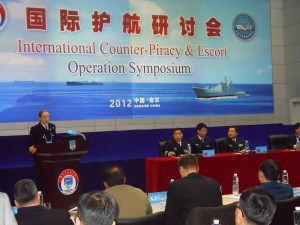
As a result of the PLAN’s new ‘far-seas’ mantra, the counter-piracy deployment has also increased Beijing’s diplomatic network across the Indian Ocean. After each task force rotation, the PLAN ‘sails along the East coast of Africa and visits Kenya, Tanzania, Mozambique, South Africa, Madagascar and the Seychelles’ to parade the Chinese flag and to foster goodwill within these countries. Further Chinese engagement with the Indian Ocean littoral states consists of port and refuelling developments at Gwadar in Pakistan, Hambantota in Sri Lanka and Chittagong in Bangladesh with the Seychelles also offering China an invitation to establish a military presence on the islands.
Yet, by cooperating to some extent with traditional regional adversaries, China hopes that it can begin to assuage their doubts about their growth as a power and hopefully continue along the path of development. On cooperation in counter-piracy and the wider Indian Ocean region it is imperative that China ‘go along to get along’ in protecting their national interests.
As Donald Rumsfeld proffered, it is ‘the mission that determines the coalition’ and the issue of piracy has clearly determined China’s participation and cooperation with the international community in the Indian Ocean. From a Chinese perspective, they have participated out of self-interest; on a wider scale, their participation has been facilitated by the ad-hoc regime that has emerged. For China to protect its national interests and continue on its path towards a ‘peaceful rise’ it now appreciates that ‘problems will be global – and solutions will be, too’; this is what truly accounts for Chinese cooperation in counter-piracy operations in the Indian Ocean.
Jack Moore is a postgraduate student of the War Studies department, King’s College London. He is the founder of World Outline (worldoutline.co.uk) and his postgraduate thesis focuses on the implications of China’s growing involvement in counter-piracy operations in the Indian Ocean.
This article appeared in original form at TheRiskyShift.com


